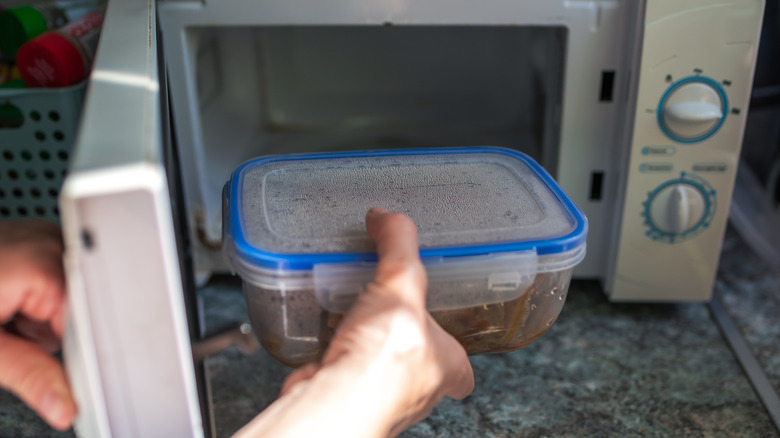Do You Really Need To Mess With The Power Settings Before Microwaving Food?
Even though it's one of the most well-utilized and versatile appliances in the kitchen, the microwave is often misunderstood. If the thought of microwaved meals brings to mind rubbery meats, dried-out leftovers, and food popping like a blitzkrieg while still being cold in the middle, it's good to know there are ways around these issues.
One way to circumnavigate these issues is to change the power settings on your microwave. Most people ignore the power panel on their microwave. Personally, I hardly even use the keypad and just punch the "add 30 seconds" button as many times as I feel sufficient. But the power settings actually have a huge impact on the food you microwave.
Microwaves heat food by sending out microwaves (as in, actual electromagnetic waves) which specifically heat up the water molecules in your food. Keeping your power settings on 100% at all times is basically the equivalent of cooking everything on your stove at high heat or baking everything at your oven's highest temperature setting. That's too intense sometimes.
Waves and wattage are key to proper microwaving
Although it's easier to simply throw some food in the microwave, push some buttons, and call it a day, the power settings on your microwave have specific uses for different foods which can drastically improve the outcome. When microwaves are running at 100% power (or level 10, depending on your model), your food is being hit with microwave radiation the entire cook time.
If you were to heat your food at 50%, or level 5, for example, the appliance would shoot out microwaves only half the time in sporadic increments; allowing the excess heat in your food to even out. It's all a matter of percentages which can be attributed to your microwave's power settings. In other words, a 1,000-watt microwave run at 50% performs at roughly the same strength as a 500-watt microwave on full blast.
Different foods correspond better with different power levels in your microwave. For example, grains like rice and barley cook better when simmered or steamed, so they do well when cooked somewhere between 30% to 60% power. Defrosting food should be run through the microwave at 10% to 40% in order to avoid partially cooking your food in hot spots while other spots stay frozen. It is a lot of trial and error to figure out, but your microwave will produce much better outcomes because of it.

